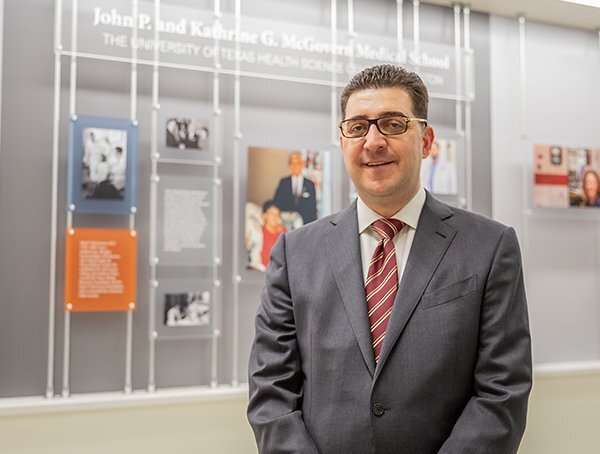Clinical trial reveals potential for treating larger strokes with thrombectomy

Building on research results published today in JAMA Neurology showing patients with larger ischemic strokes could benefit from endovascular thrombectomy, an international, multicenter Phase III clinical trial will be starting at The University of Texas Health Science Center at Houston (UTHealth).
The trial, called SELECT2 (Optimizing Patient Selection for Endovascular Treatment in Acute Ischemic Stroke), is a randomized, controlled, open-label, assessor-blinded trial assessing efficacy and safety of thrombectomy procedure in patients with larger ischemic stroke.
While multiple previous clinical trials showed that endovascular thrombectomy was safe and beneficial for patients with smaller areas of damage from an ischemic stroke, potential safety and benefits for larger strokes are still unknown.
Ischemia refers to blood supply restriction to tissue. In an ischemic stroke, a clot blocks blood flow in a cerebral artery, preventing oxygen from reaching the surrounding brain tissue and resulting in cell death. That area of cell death is called an ischemic core.
In endovascular thrombectomy, a small catheter is guided through an artery, usually a femoral artery, through the body to the site of the blockage in the brain. A blood clot removal device is deployed, which captures the clot. The catheter is then retracted.
The earlier Phase II clinical trial (SELECT), which enrolled patients in nine U.S. comprehensive stroke centers, included 105 patients with large ischemic cores. It showed potential benefits: 31% of patients who were treated with endovascular thrombectomy achieved functional independence, compared to 14% of patients who received medical management only.
"It is unclear now if thrombectomy is safe and efficacious in patients with a large ischemic core stroke. Treating physicians face a dilemma on whether to intervene in these patients," said Amrou Sarraj, MD, first and corresponding author and associate professor of neurology at McGovern Medical School at UTHealth. "Our results represent very good preliminary data that thrombectomy may be safe and efficacious in this population. It's time to test those results in a randomized trial."
The results of SELECT showed reasonable safety outcomes with thrombectomy in patients with larger strokes. The risk of secondary bleeding with thrombectomy did not increase significantly compared to medical management. Mortality rate decreased with thrombectomy (29%) as compared to medical management (42%).
The Phase III trial, which begins in August, will enroll 560 patients at 30 comprehensive stroke centers in the U.S., Canada, and Europe.
"If proven to be safe and effective, SELECT2 will extend thrombectomy indications to improve clinical outcomes in a large group of patients that does not have many treatment options at this point," said Sarraj, who is a member of UTHealth Institute for Stroke and Cerebrovascular Disease.
More information: Amrou Sarraj et al. Outcomes of Endovascular Thrombectomy vs Medical Management Alone in Patients With Large Ischemic Cores, JAMA Neurology (2019). DOI: 10.1001/jamaneurol.2019.2109















